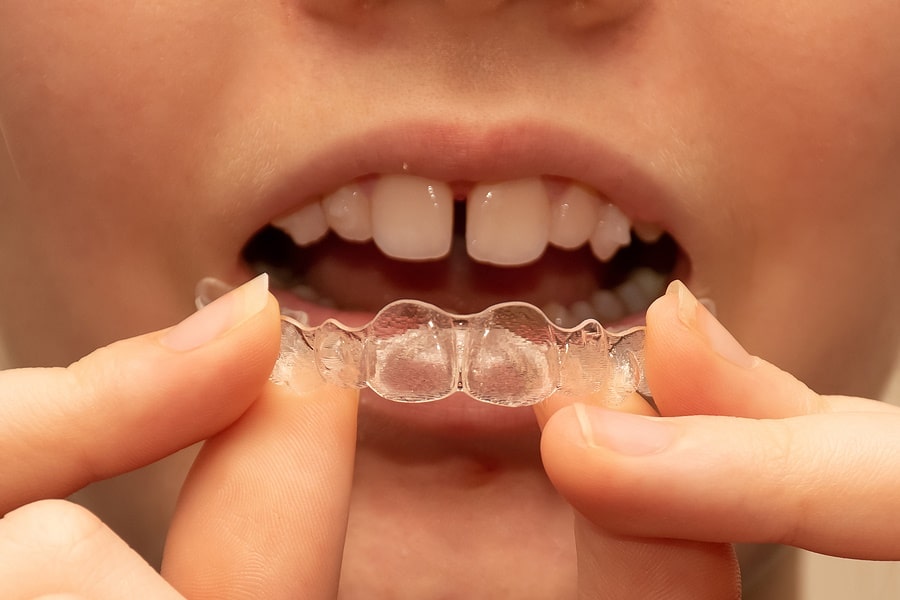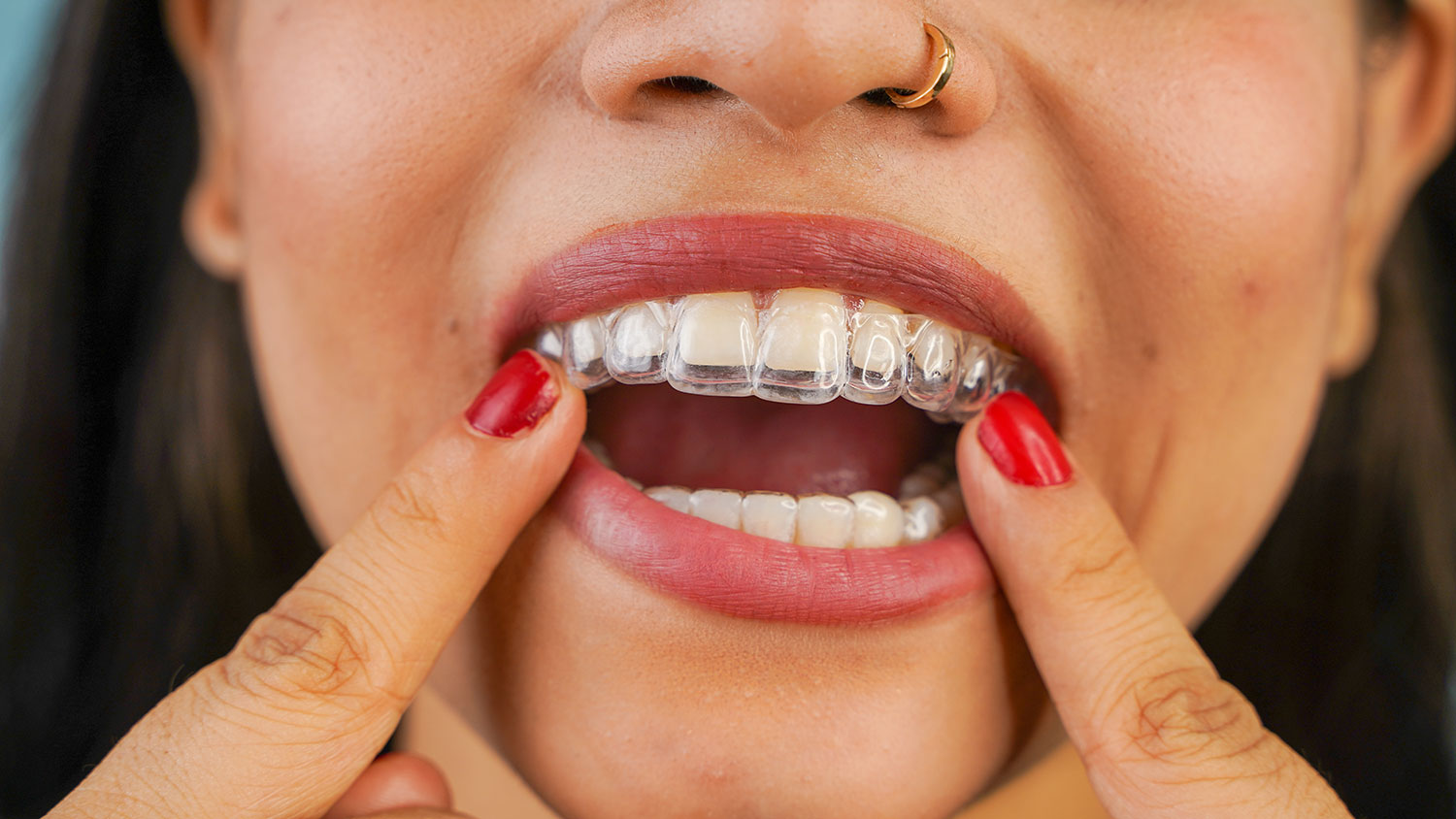Frequently Asked Questions Regarding Invisalign: Everything You Need to Know
Invisalign vs. Standard Braces: Which Alternative Is Right for You?
When thinking about orthodontic treatment, the selection in between Invisalign and conventional dental braces presents a number of crucial factors that merit mindful assessment. Invisalign uses a very discreet alternative with removable aligners, while conventional braces offer an extra noticeable yet reliable solution for serious imbalance.
Review of Treatment Options

In comparison, traditional braces contain metal brackets and cords that are adhered to the teeth. This method uses continual pressure over time to accomplish alignment. While reliable for intricate orthodontic issues, standard dental braces require regular check outs for changes and can pose difficulties in preserving dental hygiene as a result of the difficulty of cleaning around brackets and cables.
Both alternatives have their merits, and the option commonly rests on details oral problems, way of living preferences, and client compliance. Eventually, consulting an orthodontic professional is crucial for figuring out one of the most ideal therapy strategy customized to private requirements. Comprehending the subtleties of each alternative can considerably affect the overall success of orthodontic treatment.
Visual Considerations
A considerable factor influencing the choice in between Invisalign and typical braces is the aesthetic charm each therapy uses. Invisalign aligners are crafted from clear plastic, making them essentially undetectable when used. This discreet appearance is especially attracting adults and young adults that may really feel awkward regarding their orthodontic treatment. The capacity to preserve an all-natural smile throughout the positioning process can significantly boost the individual's confidence in social and specialist settings.
On the other hand, conventional dental braces are composed of metal braces and cables, which can be extra obvious. While advancements in orthodontic innovation have brought about the development of smaller braces and tinted elastics, traditional dental braces still maintain an even more obvious profile. For some individuals, the presence of dental braces might discourage them from looking for necessary treatment.
Eventually, the choice in between Invisalign and traditional braces may rest on individual preferences concerning visual appeals. Individuals that focus on discretion usually lean toward Invisalign, while those that are much less worried concerning visibility may go with conventional dental braces. Comprehending the visual effects of each option is critical for making an informed decision that aligns with one's lifestyle and preferences.
Comfort and Convenience

In regards to ease, Invisalign aligners are detachable, making it possible for people to appreciate their favored foods without restriction and maintain optimal dental hygiene. Cleaning and flossing are streamlined, as the aligners can be obtained throughout these regimens, whereas typical dental braces call for mindful steering around cables and braces.
In contrast, traditional dental braces require regular changes, making them less convenient for those with hectic schedules. Overall, the convenience and comfort of Invisalign make it an attractive choice for lots of individuals looking for orthodontic treatment.
Therapy Duration and Performance
While both Invisalign and standard dental braces are effective in dealing with dental misalignments, the duration of therapy can vary considerably in between the two options. Typically, Invisalign therapy can take anywhere from 12 to 18 months, depending on the complexity of the instance. The clear aligners work by slowly moving teeth right into their desired settings, and normal follow-ups with an orthodontist help make sure progress continues to be on the right track.
On the other hand, conventional braces usually require a longer commitment, typically varying from 18 months to 3 years. This is due to their fixed nature and making use of wires and brackets, which can be much more reliable for severe imbalances and intricate instances (Invisalign). The therapy performance of conventional braces is well-documented, hop over to these guys as they allow for accurate modifications and higher control over tooth motion
Eventually, the option in between Invisalign and conventional dental braces might pivot on both the anticipated treatment period and the specific dental problems available. Consulting with an orthodontist is essential, as they can offer tailored recommendations based upon specific needs, making certain the picked technique lines up with desired outcomes and durations.
Price Contrast and Insurance Policy Choices
Expense plays a link significant role in the decision-making procedure for individuals considering orthodontic therapy, whether choosing Invisalign or standard braces. On average, the expense of Invisalign arrays from $3,000 to $8,000, while typical braces generally cost between $2,000 and $6,000. Elements influencing these prices include the intricacy of the situation, the duration of therapy, and geographical location.
Numerous oral insurance plans give partial coverage for orthodontic treatments, however the specifics can differ commonly. Generally, standard dental braces might be more often covered by insurance policy plans compared to Invisalign, which some insurance companies classify as an aesthetic procedure.
Additionally, a number of orthodontic practices use adaptable layaway plan, making both treatment choices extra easily accessible. Patients ought to ask regarding prospective funding choices and price cuts for upfront repayments. Examining the overall expense, consisting of insurance coverage advantages and repayment strategies, is important for making an informed decision that aligns with both aesthetic choices and spending plan considerations.

Conclusion
In recap, the option between Invisalign and typical braces rests on several factors, consisting of aesthetic choices, comfort, therapy duration, and cost. Invisalign uses a discreet, detachable option that assists in oral hygiene and nutritional flexibility, while typical dental braces may be better for intricate dental issues and usually come at a reduced price point. Inevitably, assessment with an orthodontist is necessary to assess private conditions and identify one of the most appropriate treatment choice for attaining ideal oral alignment.
When thinking about orthodontic therapy, the choice between Invisalign and conventional dental braces presents a number of vital factors that merit cautious examination.Contrasting Invisalign and traditional braces reveals distinct treatment choices for orthodontic improvement.While both Invisalign and typical braces are effective in fixing oral misalignments, the duration of treatment can vary dramatically in between the 2 alternatives.Price plays a substantial duty in the decision-making procedure for individuals thinking about orthodontic therapy, whether choosing for Invisalign or conventional braces.In summary, the choice between Related Site Invisalign and traditional braces pivots on numerous factors, consisting of visual choices, comfort, treatment period, and price.